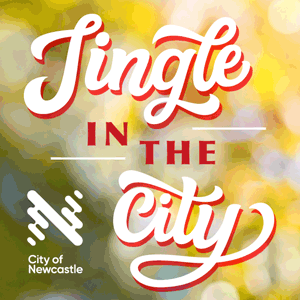Newcastle From Good to Great!
- Quentin von Essen
- Sep 24, 2019
- 3 min read

For almost two decades the Newcastle landscape has been slowly shedding its predominantly industrial past for a more diversified commercial and residential future. This transformation has been accelerating in the past few years, thanks to the considerable investment made by the government and corporate sectors.
It has been almost ten years since Newcastle was named as one of the ten best cities to visit in the world by Lonely Planet, a very welcome nomination for the sleepy coastal city wanting to fast track the transition from coal town to burgeoning urban centre. This was then followed up by Newcastle being named one of the world's top 'Smart Cities' to watch by Global magazine National Geographic Traveller in 2017.
Undergoing a substantial revitalisation process, Newcastle has fast become a key economic hub with a growing employment base and the emerging economy adding significant value to the state of NSW. As a result, this emergence has created new jobs, provided residents with a wonderful lifestyle and encouraged tourism as well as a significant and ongoing population growth.
We have seen the introduction of the Newcastle Smart City Initiative – designed to improve liveability, economic diversity, develop innovation, build an international profile and attract investment into the city; the launch of NSW government’s “Revitalising Newcastle” program with more than $650 million dollars of investment and the resulting increased spend on infrastructure, renovation and new developments.
It is these actions that have had the greatest impact on changing the face of the city centre and include projects such as the $260m light rail network and the $200m Newcastle Interchange at Wickham which created 400 full-time jobs and the construction of the new Gateway office development.
Education has been the backbone of Newcastle's innovation revolution with Newcastle repositioning itself as an education destination and increasing its profile as a university town. This includes investment in the University of Newcastle’s $95 million city campus – NeW Space, the $90m NSW Law Courts development and the planned development of 7 University buildings on the former Honeysuckle site for an innovation hub which will also include student accommodation and public space – and is predicted to double the number of students in Newcastle’s CBD.
Population growth, low unemployment and a nearly 50 per cent price disparity compared with Sydney have fuelled significant residential development in Newcastle. This has led to the city centre experiencing an apartment building boom equating to approximately 3000 additional apartments within the city’s east and west end precincts, ensuring a huge influx of residents into the CBD area for many years to come. This in itself is critical for the future of the city centre, which needs to continue attracting a mix of new business, workers, residents and tourists to ensure it not only survives but thrives.
However, the inner-city residential building spree is no longer limited to just the CBD. Many inner-city suburbs are proving popular as Baby Boomers, first-home buyers and investors have come to recognise the significant lifestyle attributes of Newcastle, the beach, advantages of living in close proximity to the city (without living in the city) and importantly, the affordable house prices that Sydney has long lost.
As a result, many suburbs such as Adamstown are proving attractive to both renovators and developers alike with property developers planning more than 300 new apartments across eight projects on Brunker Road in Adamstown alone.
For developers, the development rush coincides with Newcastle City Council’s recognition of Adamstown as a growth corridor, and for renovators, it’s the availability of older building stock in need of renewal.
For many of these suburbs, this boost in investment is critical for their ongoing survival. Not only does it improve property quality and values, but it attracts an influx of new people and new businesses to the area, demand for services and trades as well as the ongoing need for places to eat, shop, medical facilities, places to relax and be entertained. What develops is a 24-hour economy.
Taking everything into consideration, it seems we Novocastrians have a lot to look forward to as Australia’s seventh-largest city comes of age.






















































